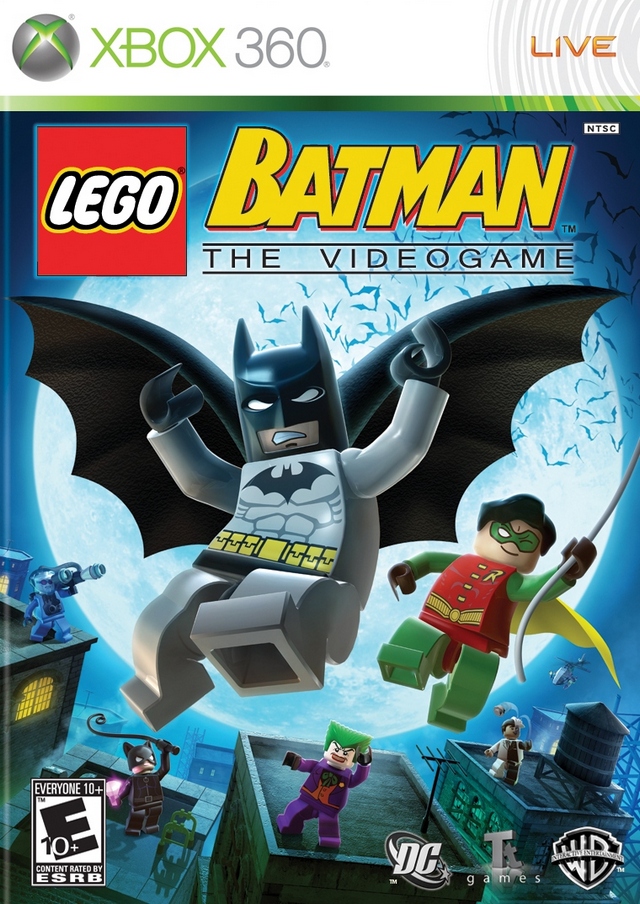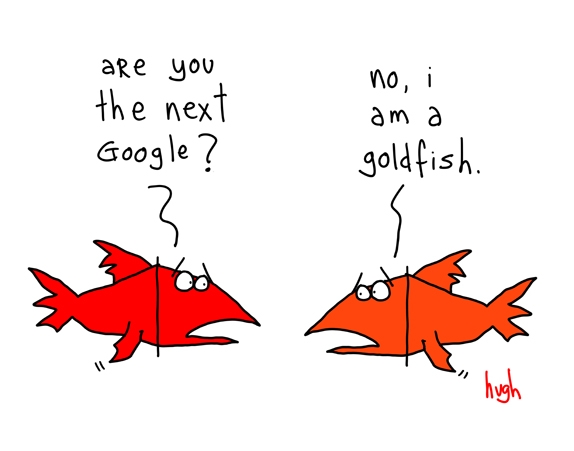Deep Linking Leadership Development to Organisational Behaviour
 In the past decade much of the truly transformational leadership work happening in organisations has been driven from a place of self mastery. This approach is however being challenged by Daniel Kahneman, a Nobel Prize-winning psychologist and the author of the new book “Thinking, Fast and Slow,” who shows by categorising our cognitive flaws, that knowing oneself is not enough, not nearly enough to be the effectual leaders we need to be.
Separate research released in September 2011 by the Minneapolis based consultancy Modern Survey also indicate a set of findings which show that the highest levels of employee engagement comes from a place other than Self. What the survey reveals is that the highest correlation between employee engagement are not appreciation, career development and recognition which have been taken as de rigeur. Instead, it is the willingness of organisations to be transparent, honest and to instil confidence in the future of their businesses that is driving higher levels of engagement in employees.
In the past decade much of the truly transformational leadership work happening in organisations has been driven from a place of self mastery. This approach is however being challenged by Daniel Kahneman, a Nobel Prize-winning psychologist and the author of the new book “Thinking, Fast and Slow,” who shows by categorising our cognitive flaws, that knowing oneself is not enough, not nearly enough to be the effectual leaders we need to be.
Separate research released in September 2011 by the Minneapolis based consultancy Modern Survey also indicate a set of findings which show that the highest levels of employee engagement comes from a place other than Self. What the survey reveals is that the highest correlation between employee engagement are not appreciation, career development and recognition which have been taken as de rigeur. Instead, it is the willingness of organisations to be transparent, honest and to instil confidence in the future of their businesses that is driving higher levels of engagement in employees.
This has a profound impact on what it is we are seeking to achieve with our leadership development programmes. It requires leadership development that is driven by the ethical positioning of organisations, and the willingness to build long term sustainable practices that employees can believe in.
It requires a realignment of how CEOs and their boards communicate but more importantly, of how they behave. This is where the real leadership development work happens and where frankly, the least is done.
Developing a sense of purpose in the work we do, managing our energy and attention at work is still critical, as is knowing how to be agile in the face of uncertain markets matters. But what seems to matter more is that we have a belief and an insight into how our leaders are running our organisations - that they are doing it with integrity and with an eye open for the long term sustainable future of the places we work in, not just with an eye on making a quick buck.
In sum, educators need to ensure when designing processes that they do not merely work at a microcosmic level, that the values of what they teach are deeply embedded into the way they teach. For leaders, it requires that the values which they purport to uphold are significantly visible in the action of their daily practices. And for directors of people management, talent and organisational effectiveness, it demands the procurement of processes which start from a place of identifying how the values of their organisations can be made clearly visible and easily emulated. This would go some way in engaging employees who as the research has shown, do genuinely want something authentic and lasting to believe in.
How Gaming helped me become a better strategist
 In the last five years, I can safely say that the majority of what I have unlearnt and relearnt, as far as strategy is concerned, comes from Gaming. I have learnt many things about strategy from the world of work and higher learning but Unlearning and Relearning have come from a different place. When I understood that the rate of change was happening faster than my ability to respond to it strategically, I started looking for another place - somewhere I could dismantle my well worn paradigms and see with a fresh pair of lenses.
I think this desire to find an alternative space to improve my strategic capacity was also the need to embrace a way of thinking which was far more collaborative in nature and one which could take me as far away from Strategy as War as possible. I started losing my interest in beating the competition and all the metaphors tied into strategy as something which assumed generals on a battlefield planning the mighty overthrow. It didn't feel real anymore and was certainly not what I was seeing playing out in the markets I operated in.
In the last five years, I can safely say that the majority of what I have unlearnt and relearnt, as far as strategy is concerned, comes from Gaming. I have learnt many things about strategy from the world of work and higher learning but Unlearning and Relearning have come from a different place. When I understood that the rate of change was happening faster than my ability to respond to it strategically, I started looking for another place - somewhere I could dismantle my well worn paradigms and see with a fresh pair of lenses.
I think this desire to find an alternative space to improve my strategic capacity was also the need to embrace a way of thinking which was far more collaborative in nature and one which could take me as far away from Strategy as War as possible. I started losing my interest in beating the competition and all the metaphors tied into strategy as something which assumed generals on a battlefield planning the mighty overthrow. It didn't feel real anymore and was certainly not what I was seeing playing out in the markets I operated in.
Frankly, I am no longer that interested in the idea of competitors as a thing to study. Not because they don't exist but more because they come from places I am finding less likely to fathom. I believe that Executive Education is learning as a lifestyle. If I were to think about who my competitors really were, I would be more inclined to think of travel agencies offering exotic destinations or the hard choice our customers have between a homeloan or a student loan. For these are often the choices people are faced with when decided what to do with their hard earned cash and its relationship to their own personal development. I love the story about SABMiller and their realisation that their competition wasn't just Brandhouse but Vodacom because both of them were hustling for the same R20 - a prepaid voucher or a quart of beer.
Games have given me an extraordinary place to experiment. I would like to share the insights I have gained from four games I have played and unlearnt and relearnt from.
The first is Fable2. I have a particular fondness for this game because up until then I had been playing mobile games. A games console was not something I had ever considered owning and it was only after my partner and I decided that it would be amazing to play together rather than alongside one another on our phones that we bought an XBox. I genuinely believed it was something I would do intermittently to relax and never believed that it could add real value to the work that I did.
What Fable2 taught me about was the need for kindness and generosity in commercial exchange. The more of this behaviour I showed the cheaper the weapons became from traders who liked me, the more followers I could call on to help me battle all manner of dragon and rascal and the more accessible and affordable the potions became. A far cry from holding your ideas close, going it alone and screwing your competition.
Next is Dragon Age2. This taught me about the importance of Agility and the capacity to change course mid direction. As long as I was prepared to move off the well worn path and try other alternatives I would be rewarded with surprise treasures and at times rare weapons. It taught me that being adaptable wasn't being wishy washy and that it in many casees saved my life and that of my team. Here, too comaraderie played a role and the value of building trust in a team.
Lego Batman showed me that if I wasn't prepared to work with my partner that we would get nowhere. As the game doesn't allow you to move too far from one another, my partner and I had to focus on what we were trying to achieve together. It created a real trust in one another and we became sensitised to always checking whether the other party was okay or whether we needed to help them get to the place we both needed to be. This I think is an invaluable lesson for teamwork.
 Final Fantasy XIII taught me about Grace in Failure and the power of persistence. So much of our fear of failing is the belief that if we make a choice that the consequences will play out for the rest of our lives. I learnt here that choices, sometimes brave choices would result in me dying but that I could always respawn. In the real world this means that the risks I take might not always play out the way I want them to but that the possibility of reinvention is a real and energising one.
Final Fantasy XIII taught me about Grace in Failure and the power of persistence. So much of our fear of failing is the belief that if we make a choice that the consequences will play out for the rest of our lives. I learnt here that choices, sometimes brave choices would result in me dying but that I could always respawn. In the real world this means that the risks I take might not always play out the way I want them to but that the possibility of reinvention is a real and energising one.
To my mind, strategy is inextricably linked to leadership development. The time I have spent gaming has genuinely helped me to develop as a leader and I think as a result, a better strategist.
Truths, Trends and Trifles in Business Education - A Hacker's Guide
 One of the most important issues we are currently facing as business educators, and certainly in the field of executive education is the ability to separate out the truths from the trends and the trends from the trifles. I am indebted to my partner, Dave Duarte for this elegant distinction between these three lenses. It is well worth reading his blog post on this as it relates to the problematics of Social Media strategies.
Truths
One of the most important issues we are currently facing as business educators, and certainly in the field of executive education is the ability to separate out the truths from the trends and the trends from the trifles. I am indebted to my partner, Dave Duarte for this elegant distinction between these three lenses. It is well worth reading his blog post on this as it relates to the problematics of Social Media strategies.
Truths
 The truth of what it is that you do will have an element which is unchanging. What is is in the nature of your work that is fixed and utterly aligned to your purpose? In my work it is the understanding that for leaders to have impact they need different practices - the ability to manage their energy and attention, working with questions rather than answers, seeing themselves as coaches and resources rather than controllers. This is the "why" of the work that I do. It is useful to spend an inordinate amount of time to really get to the nub of your why. In going slow to go fast here you really do create a landscape that you can align emergent trends around.Another way of articulating the "why" is perhaps around the idea of Purpose.
The truth of what it is that you do will have an element which is unchanging. What is is in the nature of your work that is fixed and utterly aligned to your purpose? In my work it is the understanding that for leaders to have impact they need different practices - the ability to manage their energy and attention, working with questions rather than answers, seeing themselves as coaches and resources rather than controllers. This is the "why" of the work that I do. It is useful to spend an inordinate amount of time to really get to the nub of your why. In going slow to go fast here you really do create a landscape that you can align emergent trends around.Another way of articulating the "why" is perhaps around the idea of Purpose.
Trends
Trends, on the other hand, are what are appearing on your horizon that are creating shifts in behaviour and will impact on the work you do. Trends are the "What". A trend is something which you can choose to see and align to your Why. Not every trend will be meaningful to the work that you do but if you can pick two or three things that have impact these are the ones to spend time on crafting alignment and responses. In my world, the trends that impact on what I do are the drive for responsible leadership, the attention economy, information overload, learning on demand, and the upsurgence of collaborative technologies. Understanding the importance of these trends allows me to craft responses that may well be meaningful in my search to help leaders bild practices that help them achieve greater impact - like using Curiosity as a lens to filter the quality of our attention, building a model around Productive Presencing which helps us manage our attention and energy at work, constructing an attention audit to help engage with negative voices in our heads and agility as a leader's toolkit for building practises that help us change course mid direction and encourage the perspectives of others in our decision making. Trends generally have upwards of a 15 year lifespan which means that their impact is significant.
Trifles on the other hand are those fabulously sexy tools which are here today, gone tomorrow. Like Zite, or Foursquare, Ning, Facebook or Twitter. They are the "How" of what it is we do - applications which we can use expediently to get our message across but which we can equally abandon for another platform which might serve us better at a later stage. One of the issues with the age we live in is that we are just too busy to make these distinctions and often risk pouring an enormous amount of energy and capital into trifles rather than the alignment of particular trends with our truths. Overinvesting in a trifle hurts your business and erodes your truth. Often the mistake trendforecasters make is to focus on the trifles whihc three years down the line are gone.
It is my hope that these three lenses will serve you well in your own decisionmaking around what to track and what to use. As a hack, it is really just about remembering what is the Why (Truths), what is your What (Trends) and what is your How (Trifles). In an information-rich world this might well be an important filter.
Happy hacking.
A talk to be given tomorrow at the EFMD Annual Conference in Brussels, Belgium.
Productive Presencing - Six Hacks To Get Learner Ready
 This is pretty much a rough guide of a plenary/workshop I am running at Melbourne Business School next week as part of the Future of Learning conference.
My first experience of learners was a group of maximum security prisoners in three South African prisons – Pretoria Central, Johannesburg Maximum Security prison and Diepkloof Women’s prison. The year was 1995. I was running what would become creative therapeutic workshops to build rehabilitation in prisoners. One thing I knew was that in order for someone to change they needed to believe that it was possible but also safe. How do you build the notion of safety in a place which is violent and frankly, very unsafe?
This is pretty much a rough guide of a plenary/workshop I am running at Melbourne Business School next week as part of the Future of Learning conference.
My first experience of learners was a group of maximum security prisoners in three South African prisons – Pretoria Central, Johannesburg Maximum Security prison and Diepkloof Women’s prison. The year was 1995. I was running what would become creative therapeutic workshops to build rehabilitation in prisoners. One thing I knew was that in order for someone to change they needed to believe that it was possible but also safe. How do you build the notion of safety in a place which is violent and frankly, very unsafe?
One thing I also knew was that institutional places are very much the same. They work by rule and repetition. In prisons, the repetition of the rule often serves a place to break the spirit of people to mould them into something new – almost like what is done to first year students at art and drama school. Misguided, seering and very often deeply unsuccessful and counterproductive. I knew that if I could break the repetition for others that the possibility existed that they could change. My brief was to get prisoners to write poems for an event which would be headlined by Linton Kwesi Johnson. I had been asked to take part in it as a poet and was in this position because I wanted the prisoners who were being entertained to have poems of their own. I worked with them using a principle called synesthesia – it was useful to start understanding metaphor and also to help people break down assumptions of what sense could be used for. I would blindfold prisoners and get them to taste herbs and tell me what shapes emerged for them. I would get them to imagine colour in sound. We then looked at animating furniture and objects around them just with their imagination.
What was amazing for me was when prisoners started telling me of how this process had helped them. One woman told me that now when she had to polish the corridor floors which were always immaculate and certainly not in need of polishing she would listen to the sounds and build paintings in her head. Another told me that when she went to her cell, her blanket was her mother, her pillow her child and her chair her grandmother. I worked in these places for 3 years – it build into me the understanding that learner readiness – the ability to open others to learning and change was some of the most important work that could be done in the world.
I have moved to other places not exactly that dissimilar to prisons. They also have their own archaic way of working in sometimes senseless ways. This place is the world of work. The world of work has changed profoundly. It is no longer a place we go to think.Perhaps it is not even a place anymore we go to get things done. In the world of education, preparing learners to learn is critical. We have a raft of research on how to build readiness before delegates come on a programme and have to a large extent done a significant amount on work on building learning containers on the programme for people to help open up and reframe our thinking. But what about learner readiness for going back into the work environment? Surely this is the reason why we are running leadership programmes in the first place. It is for the traction for what we can build back at work. Or is it?
This became a critical question for me and is one of the driving forces for the direction this presentation will take. For when I started investigating the link between exiting programmes and entering work, the raft of research disappeared. It is almost as if this is a potential white space, not managed and certainly not well resourced which could become a rich source of innovation. It is a place which is between a formalised order of learning and a formalised place of work. This white space felt like it held an enormous possibility to build learner readiness. But something still made me feel uncomfortable.
First, I don't like the idea of learner readiness. It implies an event that someone is going to plunge into. Secondly, it assumes that the onus and success is the responsibility of the learner. I l have coined another term instead - the idea of Productive Presencing. There has been much work done by Otto Scharmer on the notion of Presencing. But for him it is a reflective place. The place you go to to stop the immediate causal relationship between observation and action. But what if you could create a state of being in yourself which embraced the fact that Learning is a Lifestyle, a way of Being which can in actual fact make you more productive and better at what you do? I like the idea of productive presencing because it acknowledges that the only place we are safe is in the present but that this is also a place where enormous productivity can flow.
With the socialisation of the workplace, the boundary between work and our private life has become blurred. We deal with our private lives at work but we also take devices which contain our worklife into our home lives. As the boundary between these worlds is becoming blurred what is the readiness we are preparing learners for. Perhaps it is presencing instead? It is certainly not just for the office and frankly the idea that the office is where you go to to get work done is also no longer tenable.
Perhaps it was the sense that for me, work is not a place where I personally get things done. I have a number of staff I manage, various stakeholders I need to engage and certain ideas that I have to get out during the day.
Work is a place I go to, to check e mail, connect with my staff but it certainly is not a place I go to work on ideas or deigns, or processes. So where is work. It is frankly often in my private spaces, on walks, in conversation over breakfast or a meal. In the bath. Perhaps this is a very particular space and not one which many people experience struggling in. For my work really is the generation of ideas. I spoke to others who are engaged in more administratively driven work. What I discovered was that the biggest challenge which they faced was being interrupted while performing tasks.
So what does this say for learner readiness? The office is not a still pond into which the sated learner is dropped. In actual fact it is everything other than that. If the world of work is not a calm, stable place where tasks get done but rather a place forever changing filled with high levels of uncertainty and complexity should the learning we are doing not reflect this? Should we not be training our leaders how to manage teams in this environment - how to be productively present?
Why are we even still speaking about time management? Time is an infinite resource. It is our energy and our attention which we need to manage better in the sea of time we have. According to Galinsky (2010), we need to manage our energy and our attention rather than our time. Time is infinite but the energy we need to use in that time and the attention we need to focus on what we are required to do is critical to get it done. There has been much recent take about taking more breaks ad working in sprints rather than in long marathon like phases. I have been experimenting with Pomodoros[1]. I am in actual fact am writing this using the Pomedoro method (I have used 13 of my 25 minutes to write this thus far). It is a method that allows one a highly focused period of time to get a task done It does not allow for interruption, distraction or multi tasking. I think each delegate should be given a Pomedoro as they leave a leadership programme. At UCT GSB Executive Education we use the idea of tea in a related fashion.
For productive presencing is also about unlearning things. In order to learn more, develop agility and reframing and curiosity around what you do and engage with, one needs to be able to change. One of the conditions for change is to allow yourself to let go of particular positions or learnings. The story of the Zen Master and the teapot is an old one and has been massaged and recreated for many platforms. This is the version that keeps me humble and interested in learning as a lifestyle. A businessman approaches a wise zenmaster and begs him to tell him all he knows. The zenmaster asks, in reply, “Can I pour you a cup of tea?” The businessman says, “No, no. That really isn’t necessary. I really just want to learn all I can form you as soon as possible. The zenmaster stares hard at the businessman and again, he asks pointedly, “Can I pour you a cup of tea?” The businessman allows a look of irritation ot lfit across his face and says to the zenmaster, “Alright, alright, just one cup”. The zenmaster starts pouring the fine tea into the businessman’s cup. After a while the businessman says, “Excuse me, the zemaster, but the tea is overflowing from the cup.” The zenmatser looks at the businessman and says, “Yes. That is like you, my son.You are too full of your own knowledge. Go away and empty your teacup. For it is only then that I can teach you anything ”
The sense of emptying one’s teacup is an important lesson for leaders. We can only change our thinking, build our curiosity and develop agility by unlearning what we know often. This requires constant filling and drinking of the cup of knowledge but also being prepared to empty it again to learn other things.
Is this really the world we make learners ready for? I am not sure we do. So in the spirit of developing productive presencing for an age where nothing is certain, I want to suggest six hacks which have helped me and which we use to get learners ready for learning as a lifestyle and not as an event.
1. Sprints
First, is the idea of Sprints. Sprints are what we use Pomodoros for. Realising that we get the most work done when we have tangible, measurable, time-bond goals for what we want to achieve. So this would be SMART goals but it is using the understanding of our energy and attention to get it done. Time is literally used in this sense as a timer. I have looked at a number of research papers on what metrics to use for chunking out time. Some speak of 90 minutes as the solution (Schwartz, 2010), other speak of chunking tie into 25 minute sprints. I tend to like the 25 minute Pomodoro method firstly because 90 minutes feels more like a marathon than a sprint to me and there is something manageable about doing a task for 25 minutes taking a 5 minute break and then repeating this process another 3 times. So technically you use 2 hours in an incredibly productive fashion. The process can then only be repeated once again during the day. If I think of writing this particular paper, I had set aside the whole day because that it how long I estimated it would take me to write this. There is a belief in my own productivity which has allowed me to write faster and for ideas to flow because I know that I have a very clearly allotted time to do this in which also allows me to do other things.
2. How to Breathe
The second hack is around how we use our breath. Linda Stone’s work on email apnea has been widely disseminated. Often when we read our e mails we hold of breath. What this does is to activate our sympathetic nervous system. This in turn activates our stress hormones and makes our prefrontal cortex shutdown. Now we are only focusing on immediate reactions to a very specific threat. It destroys any possibility of widened thinking, or of looking for other possibilities. Instead the advice for responding to what seems to be an instinctual reaction to a threat is to breathe. When one breathes through one’s nose, one activates one’s parasympathetic nervous system which is all about rest and recovery. It creates an expansiveness around our thinking and allows dopamine to flow into our bodies. Just this simple hack could help many an executive from putting on weight from stress which is literally what happens when your sympathetic nervous system is activated and coritsol and cholesterol are dumped into your bloodstream
3. Ancestral Voices
One of the most important conditions to create for learner readiness is a sense of community, a critical mass that can be relied upon by the learner post the programmes. We attempt to achieve this on two levels. One is to use technologies like learning platforms that we custom build for our processes where learner can share and exchange ideas and challenges. Another form is to use telephonic engagement – peer coaching through the use of what we call a leadership council – were all learners call in and one person’s challenge is nominated as the issue for discussion. The nine shares their issue and each participant responds back not with advice but with stories from their own experience or observations that they make. Another mechanism we use which is perhaps on a different level is the calling of ancestral voices. I have been privileged enough to use this technique with a group of executives form East Africa and another group of executives from 11 countries in Africa as well as my own team. Its requirements are very simple but require an enormous trust and sincerity for it to work. The invitation is made to the group that they call on their ancestors to guide them on their journey forward. Each delegate says his or her name, whom s/he is the son/daughter of and who s/he is the grandson or granddaughter of. So in my case it would be: My Name is Elaine Rumboll, daughter of Frank and Adrienne Rumboll and granddaughter of Johannes and Elaine Badenhorst and Anne and Frank Rumboll. One can use a stik which can be passed on to do this process. It is incredibly powerful and has in some cases moved delegates to tears. It also sets the intention of a journey which is going to be contained by many for the group.
4. White Spaces
I came across the idea of white spaces when I was running a process for Toyota in Kenya. One of our speakers was Erik Hersman, a known innovator in Africa. The idea of white spaces has affected me profoundly and I have already been working with my team to identify what we can use in our own department for this. A white space is a space which is rich for innovation in any organisation. It is a space which is not managed by anyone nor does it have a financial budget tied into it. A good example of how one could use a white space is for example asking if the organisation has a Twitter account and who manages it
5. Jamming Sessions
Meetings are another place ready for an overhaul. Much has been done through the work of Thinking Environment practise to get people’s voices in the room and to start listening to one another with respect and attention. Another mechanism that I have been working with is a process called Jamming Sessions. Meetings are more often than not also places where people take a position which can often be demotivating and destructive for many. A jamming session is a process which allows many perspectives into the room on a particular issues and takes the person out of the problem. How it works is like this: Create a few card with different words on them : Resource, experience, clarity, example, unspoken, fact, empty chair. Staff are then invited to sit on any chair and once the question is decided can go and give their opinion on it from any one of these places. If someone also wants to speak form that place they go and stand to the left of that person. Once the last person has spoken this person then takes that seat and speaks for that position. One can also have people standing in places of support. So if you would like to support someone’s position on something you may go and stand to their right and put your hand on their shoulder. We do it outside once a month in our garden.
The question is chosen beforehand and agreed on as an issue by the group. Whatever resolution which come out of the process are auctioned post the jamming session. It is important that once the jamming session is finished that each person has one final opportunity to give a perspective on what it is they have learnt from the process. Jamming sessions are also a wonderful way of responding to recent research findings which show that as soon as a position is publically stated it is very difficult to change someone’s perspective on it (REF). Therefore the longer you wait for someone to give a perspective or position on something the more likely they will be able to change their stance.
6. Managers as Resources and Coaches
Perhaps one of the things which has changed profoundly in the world of work is the role of managers. In Jason Fried’s very persuasive talk Why work doesn’t happen at work he refers to managers as interrupters and in fact calls for their total demise.I would like to call instead for managers to be seen in a different role. Managers as Mentors and Coaches. What does this mean? He role of a coach is to ask incisive questions which gets the coachee to a place where they determine their own solutions. So the role of the manager in the 21st century is to help employees by asking questions which can help them think through a place where they may be stuck or allow them to start thinking in an alternative direction. After all, answers don’t change the world questions do. The manager is also now in a position because they are not taking over the problem from the employee able to be deployed as a resource. What this means is that if the employee needs a stumbling block or obstacle to be moved for a goal to be achieved the manager is able to do this because their time has been freed up.
We have looked at six elements to create a greater sense of productive presencing in delegates. However the most important condition for this state is the ability to unlearn and relearn or reframe what one is thinking and doing. Without the buy in for this none of the other hacks are sustainable. Another realisation is that many of these hacks don’t require added financial investment to be applied. In fact, this could be going on in your head without others really having to even know you are doing it. Similar in a way to the prisoners who are able to create another world which is not impacted upon by the pettiness of an institutional place of discipline.
[1] The interesting anecdote around its origin is that a programmer was wanting to get his work done in discrete spurts and borrowed his mother’s clocktimer which was in the shape of a tomato. It was a 25 minute timer hence the name Pomodoro and the discrete breakdown into 25 minute bursts with 5 minutes after for recovery.
When Work no longer works
 I remember when Work was the place you went to, to get things done. Increasingly I find that when I really have to get things done - which in my industry is coming up with new ideas and designs for executive leadership development work (apart from managing a whole lot of people and bringing in revenue), work is probably the last place I would think of to do this well. Why is this? Well, frankly work is the place where I am interrupted a lot by others, where unexpected demands happen and where there is little time to think slowly, deeply and well. For a truly wonderous and succinct description for the world of work as interruption, Jason Fried's talk at TED on why work doesn't happen at work is a gem.
I have become interested in this because I have to give a plenary session in two weeks time at The Future of Learning conference - a crosss continental initiative hosted by Ashridge, Melbourne Business School and UCT GSB.
I remember when Work was the place you went to, to get things done. Increasingly I find that when I really have to get things done - which in my industry is coming up with new ideas and designs for executive leadership development work (apart from managing a whole lot of people and bringing in revenue), work is probably the last place I would think of to do this well. Why is this? Well, frankly work is the place where I am interrupted a lot by others, where unexpected demands happen and where there is little time to think slowly, deeply and well. For a truly wonderous and succinct description for the world of work as interruption, Jason Fried's talk at TED on why work doesn't happen at work is a gem.
I have become interested in this because I have to give a plenary session in two weeks time at The Future of Learning conference - a crosss continental initiative hosted by Ashridge, Melbourne Business School and UCT GSB.
The irony is that as I write this, it is not from work. I am doing this from home today - where I generally think very well. The topic of my paper is Learner Readiness -which within this context is rather paradoxical. If we no longer work well at work, where else are we learning and what kind of readiness for learning should we be building? I am in agreement with the move towards learning as a lifestyle and Dave Duarte's superb insightson this - where learning is a way of being, not just something which happens in very particular places - but rather as something which is part of what we do in multiple spaces to be enriched and fulfilled human beings.
Remember that old chestnut, the 70/20/10 Model which said 70% of learning happens on the job, 20% comes from observing and working with role models at work and 10% comes from formal training. What do we do now when increasingly, what we teach impacts people in their personal and professional lives? The model does not allow for home as a place of learning. Neither does it allow for the very real impact of coaching would would perhaps change the 20% rule significantly. I would say that today 10% of learning happens at work, upwards of 50% through coaching - either executive or peer and that upwards of 40% happens in those other places where home is a significant player - because with the addition of new technologies -we are no longer able to discretely box 'work' into the thing we do at the office.
I think this shift has a significant impact on what we design for organisations when it comes to their leadership development and critically when it comes to building learner readiness because it is no longer readiness just for the office but in actual fact readiness as a way of engaging in the world through the multiple places where we learn continuously.



